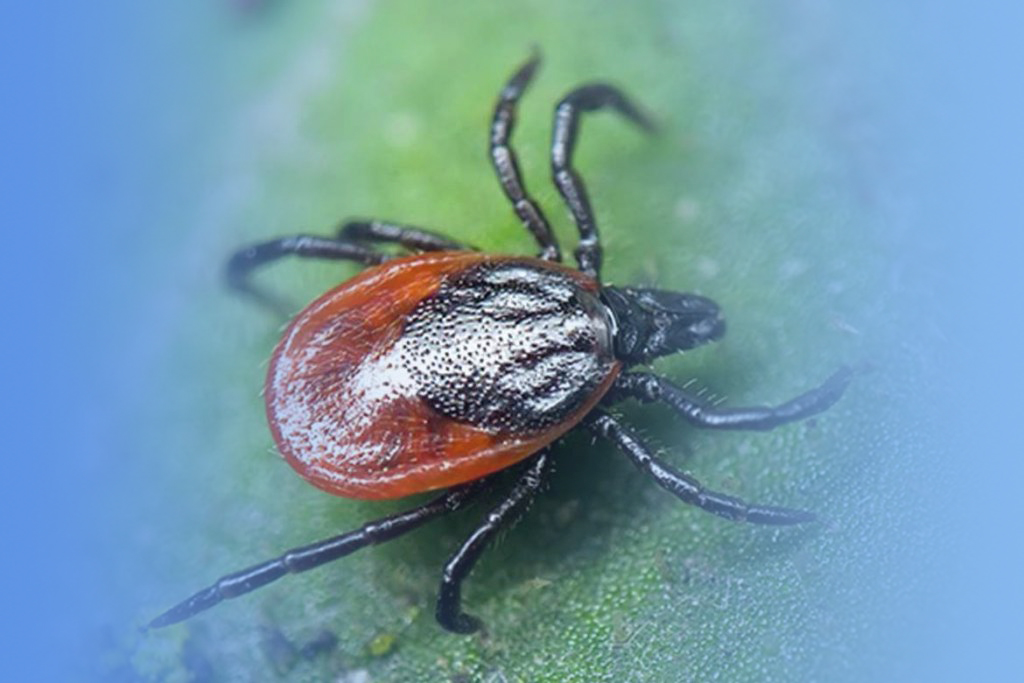[1] Pietri JE,Tiffany C,Liang DS. Disruption of the microbiota affects physiological and evolutionary aspects of insecticide resistance in the German cockroach,an important urban pest[J]. PLoS One,2018,13(12):e0207985. DOI:10.1371/journal.pone.0207985.
[2] Chehelgerdi M,Ranjbar R. Virulence factors and antibiotic resistance properties of Streptococcus species isolated from hospital cockroaches[J]. 3 Biotech,2021,11(7):321. DOI:10.1007/s13205-021-02874-w.
[3] Fazeli-Dinan M,Habibi A,Haghi SFM,et al. Determination of susceptibility levels of three different cockroach species including hospitals German cockroach,Blattella germanica L. (Blattodea:Blattellidae),to common insecticides,cypermethrin,propoxur and fenitrothion[J]. Int J Health Sci (Qassim),2022,16(4):13-21.
[4] Cai T,Wang XJ,Liu BR,et al. A cuticular protein,BgCPLCP1,contributes to insecticide resistance by thickening the cockroach endocuticle[J]. Int J Biol Macromol,2024,254:127642. DOI:10.1016/j.ijbiomac.2023.127642.
[5] Gondhalekar AD,Appel AG,Thomas GM,et al. A review of alternative management tactics employed for the control of various cockroach species (Order:Blattodea) in the USA[J]. Insects,2021,12(6):550. DOI:10.3390/insects12060550.
[6] Chinese Center for Disease Control and Prevention. National vector surveillance implementation program [Z]. Beijing:Chinese Center for Disease Control and Prevention, 2016. (in Chinese) 中国疾病预防控制中心. 全国病媒生物监测实施方案[Z]. 北京:中国疾病预防控制中心,2016.
[7] General Administration of Quality Supervision,Inspection and Quarantine of the People’s Republic of China,Standardization Administration of the People’s Republic of China. GB/T 26352-2010Test methods of cockroach resistance to insecticides-The bioassay methods forBlattella germanica[S]. Beijing:Standards Press of China,2011. (in Chinese) 中华人民共和国国家质量监督检验检疫总局,中国国家标准化管理委员会. GB/T 26352-2010蜚蠊抗药性检测方法 德国小蠊生物测定法[S]. 北京:中国标准出版社,2011.
[8] Lee LC,Lee CY. Insecticide resistance profiles and possible underlying mechanisms in German cockroaches,Blattella germanica (Linnaeus) (Dictyoptera:Blattellidae) from Peninsular Malaysia[J]. Med Entomol Zool,2004,55(2):77-93. DOI:10.7601/mez.55.77_1.
[9] Ghaderi A, Baniardalani M, Basseri HR. Level of pyrethroid-resistance associated with cytochrome P450 expression in German cockroach Blattella germanica (Blattodea: Ectobiidae) in the field collected strains[J]. J Arthropod Borne Dis, 2021, 15(2): 152-161. DOI:10.18502/jad.v15i2.7484.
[10] Wu XY,Appel AG. Insecticide resistance of several field-collected German cockroach (Dictyoptera:Blattellidae) strains[J]. J Econ Entomol,2017,110(3):1203-1209. DOI:10.1093/jee/tox072.
[11] Hu IH,Chen SM,Lee CY,et al. Insecticide resistance,and its effects on bait performance in field-collected German cockroaches (Blattodea:Ectobiidae) from Taiwan[J]. J Econ Entomol,2020,113(3):1389-1398. DOI:10.1093/jee/toaa053.
[12] Wang XJ,Lai SH,Liu F. Cross-resistance of cypermethrin-resistant Blattella germanica to chemical insecticides[J]. Chin J Vector Biol Control,2004,15(3):178-179. DOI:10.3969/j.issn.1003-4692.2004.03.006. (in Chinese) 王学军,赖世宏,刘峰. 德国小蠊抗性品系对化学杀虫剂交互抗性的研究[J]. 中国媒介生物学及控制杂志,2004,15(3):178-179. DOI:10.3969/j.issn.1003-4692.2004.03.006.
[13] Hu J,Liu Y,Zhang SH,et al. An analysis of resistance of Blattella germanica to commonly used insecticides in Shenzhen,China[J]. Chin J Vector Biol Control,2021,32(1):70-73,77. DOI:10.11853/j.issn.1003.8280.2021.01.014. (in Chinese) 胡静,刘阳,张韶华,等. 广东省深圳市德国小蠊对常用杀虫剂的抗药性分析[J]. 中国媒介生物学及控制杂志,2021,32(1):70-73,77. DOI:10.11853/j.issn.1003.8280.2021.01.014.
[14] Li TQ,Wu YY,Liu QM,et al. Surveillance results of the insecticide resistance of Blattella germanica in Zhejiang Province of China,2018[J]. Chin J Vector Biol Control,2022,33(4):462-465. DOI:10.11853/j.issn.1003.8280.2022.04.003. (in Chinese) 李天奇,吴瑜燕,刘钦梅,等. 浙江省2018年德国小蠊抗药性监测结果分析[J]. 中国媒介生物学及控制杂志,2022,33(4):462-465. DOI:10.11853/j.issn.1003.8280.2022.04.003.
[15] Kovacic P,Somanathan R. Propoxur:A novel mechanism for insecticidal action and toxicity[J]. Rev Environ Contam Toxicol,2012,218:141-150. DOI:10.1007/978-1-4614-3137-4_4.
[16] Hou YX,Wang F,An Z,et al. Resistance of Blattella germanica to commonly used insecticides in Wuhu,Anhui Province,China,2022[J]. Chin J Vector Biol Control,2023,34(5):612-616. DOI:10.11853/j.issn.1003.8280.2023.05.005. (in Chinese) 侯银续,王斐,安洲,等. 安徽省芜湖市2022年德国小蠊对常用卫生杀虫剂的抗药性调查[J]. 中国媒介生物学及控制杂志,2023,34(5):612-616. DOI:10.11853/j.issn.1003.8280. 2023.05.005.
[17] Hu IH,Tzeng HY,Chen ME,et al. Association of CYP4G19 expression with gel bait performance in pyrethroid-resistant German cockroaches (Blattodea:Ectobiidae) from Taiwan[J]. J Econ Entomol,2021,114(4):1764-1770. DOI:10.1093/jee/toab104.
[18] Lee SH,Choe DH,Rust MK,et al. Reduced susceptibility towards commercial bait insecticides in field German cockroach (Blattodea:Ectobiidae) populations from California[J]. J Econ Entomol,2022,115(1):259-265. DOI:10.1093/jee/toab244. |



